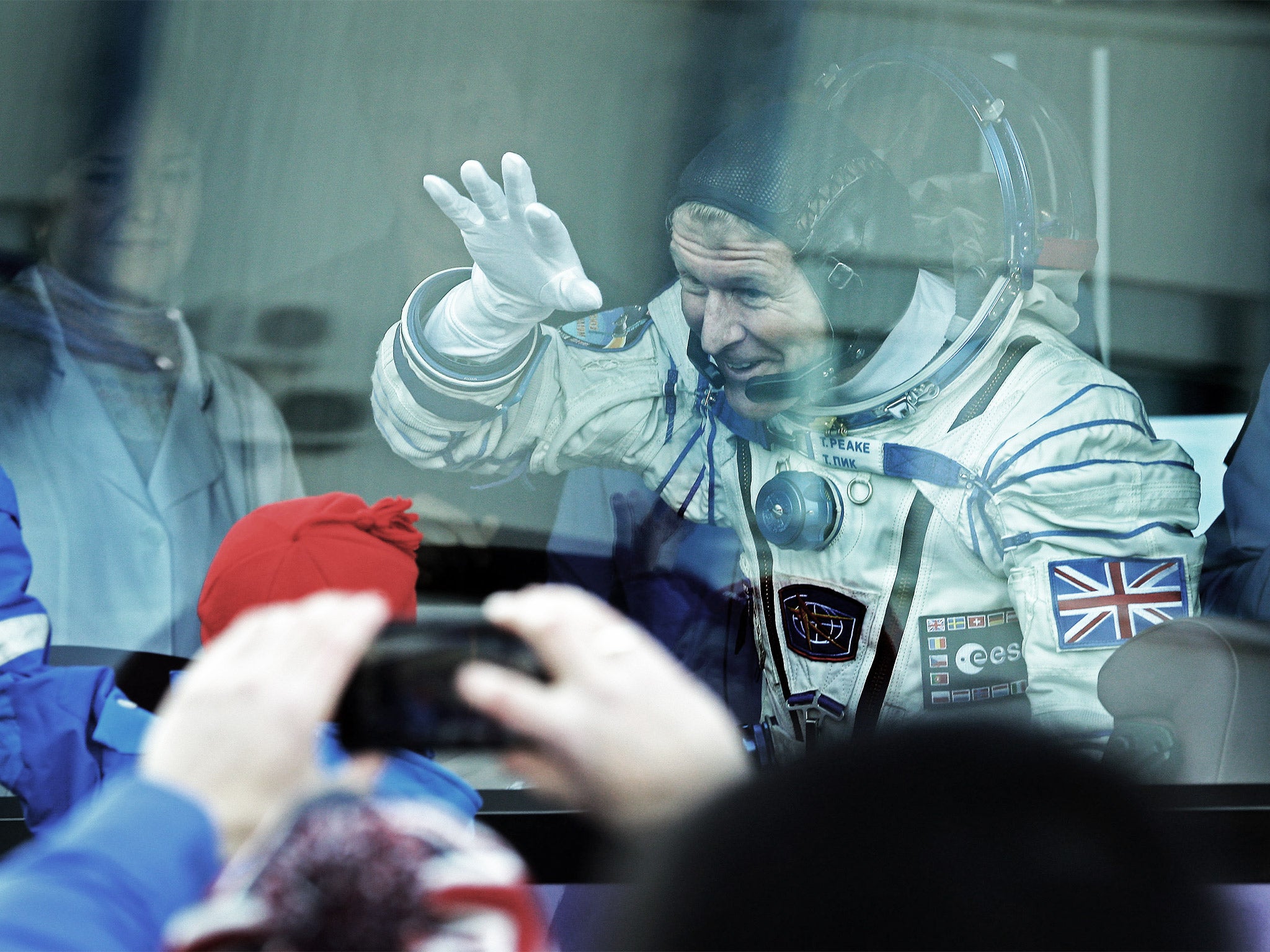Tim Peake space launch: How the UK astronaut's voyage to the International Space Station unfolded
It took six hours, four Earth orbits and several sunrises and sunsets for the Major and his crew to reach the space station

It was a beautiful day…and night, and day, and night and day…before Major Tim Peake arrived at the International Space Station, his home for the next six months.
“To Europe and the UK, I hope you enjoyed the show,” he said after boarding his home for the next six months.
It took six hours, four Earth orbits and several sunrises and sunsets for Major Peake and his fellow crew to reach the space station from a standing start.

"It was a beautiful launch," Tim Peake told his family. "That first sunrise was absolutely spectacular - and we also got a moonrise on the first orbit as well. It was beautiful to see."
It was a text-book launch into a cloudless blue sky from a freezing Baikanour Cosmodrome in Kazakhstan, with U2’s Beautiful Day still ringing in Major Peake’s ears – one of the three songs he requested while waiting in the cramped Soyuz TM capsule for take-off.
The last support tower peeled away precisely to plan in the moments before the four immense booster rockets of the Soyuz FG rocket and its powerful core engines were ignited at 11.03 London time yesterday morning, lifting the tiny manned capsule on top of the three rocket stages with 422.5 tonnes of thrust, some 26 million horsepower.
Two minutes into launch, the four boosters were jettisoned in perfect symmetry to allow the core rocket engines of the second stage to take over until 4.48 minutes into the flight when it too was jettisoned at an altitude of 109 miles.
It took another four minutes for the Soyuz TM capsule to reach a height of 129 miles above ground, travelling at 15,534mph. At precisely 8 minutes 48 second into the flight, the third stage jettisoned with a visible jolt to the crew inside. The Soyuz TM then smoothly entered “orbital insertion” – the bright speck in space just visible to its final target, the International Space Station (ISS) orbiting 100 miles overhead.
It took a further six hours for the Soyuz spacecraft to catch up with its quarry, itself travelling at 17,500mph and orbiting the Earth at an average altitude of 220 miles. During the final approach, the docking probe of the Soyuz was captured by a series of hooks and latches to the docking cone of the ISS.
Once locked together with a tight seal confirmed, the air pressure in the Soyuz was equalised with that of the space station and the hatch opened, allowing Major Peake, and his two fellow crew members, Nasa astronaut Tim Kopra and Roscosmos commander Yuri Malenchenko, to pass through into the ISS – their new home for the New Year.
Major Peake is the first government-funded British astronaut and the mission, named Principia after Isaac Newton’s great thesis on gravity, will involve scores of scientific experiments in space – including a study of headaches after take-off.
All the pre-launch rituals were observed: the signing of the hotel door by each crew member, the watery blessings of a Russian Orthodox priest, and the contemplative micturition on a rear wheel of the astronauts’ coach – a Russian tradition that started with Yuri Gargarin, the first man in space.
Before being strapped into the three-man cockpit of the Soyuz capsule, Major Peake had a final private moment with his wife Rebecca and his sons Thomas, 6, and Oliver, 4, who said goodbye to their quarantined father from behind a glass screen.
On his way by coach to launch pad number 1, where Gargarin was launched into space in 1961, Major Peake grinned broadly through the window of the bus, giving the thumbs up to his family, including his parents Nigel and Angela.

The first nine minutes of the mission were probably the most dangerous and nerve-racking, given that the crew were lying on an explosive mix of some 270 tonnes of kerosene and oxygen fuel.
His wife Rebbeca, who watched the launch from a viewing area 1.7km from the launch pad, appeared visibly relieved with the pitch-perfect lift-off which saw the rocket go from zero to 1,000mph in 60 seconds, breaking the sound barrier in the process.
“Wasn’t it an amazing sight? I had the biggest smile on my face,” Rebbeca was heard to say when it was over.
One of her sons simply cried out “Bye Daddy!” as the 50ft rocket soared into the sky.
Tim’s father, Nigel, was equally ecstatic: “I mean that must have been the most perfect lift-off – the weather, the view, the sky and then the condensation cloud. It was just magical,” he told the BBC.
David Cameron expressed prime ministerial “admiration and wonder” at Major Peake’s achievement, tweeting a photograph of himself watching the launch from Number 10 and later issuing a video message thanking the ex-army aviator and helicopter test-pilot for “doing us proud”.
Back on planet earth, the physicist Brian Cox said that if Major Peake’s mission inspires just one or two school children to become engineers, scientists or test pilots then it would have been worth the effort.
Meanwhile, Elton John sent his own message via Twitter: “From one Rocket Man to another, good luck astro-timpeake with your launch and mission!”
Join our commenting forum
Join thought-provoking conversations, follow other Independent readers and see their replies
Comments
Bookmark popover
Removed from bookmarks